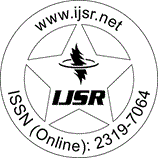Downloads: 3 | Views: 117 | Weekly Hits: ⮙2 | Monthly Hits: ⮙3
Review Papers | Mycology Science | India | Volume 14 Issue 1, January 2025 | Popularity: 5.5 / 10
Health Implications of Mycotoxins in the Food Chain: Mechanisms of Toxicity and Risk Assessment - A Review
Urwashi Arvind Maurya
Abstract: Imagine a world where every meal we consume could carry an invisible threat one that lurks silently in the foods we rely on for nourishment. This threat is not an immediate danger that we can see or taste, but a slow, insidious poison that can wreak havoc on our health over time. Mycotoxins, toxic compounds produced by fungi, are found in a wide range of agricultural products, from maize to peanuts, and even coffee and spices. These naturally occurring substances, while invisible to the naked eye, have devastating effects on human health, causing cancer, liver damage, immune suppression, and neurological disorders. In regions where food security is already fragile, the dangers posed by mycotoxins are especially severe, exacerbating the ongoing battle against hunger and malnutrition. As the climate continues to change, the conditions that foster mycotoxin - producing fungi warmer temperatures, erratic rainfall, and more frequent extreme weather events are becoming increasingly prevalent. These shifts in climate are not only altering the way we grow our food but are also expanding the geographical range and severity of mycotoxin contamination. The traditional methods of assessing the risks associated with mycotoxins, though valuable, no longer suffice in predicting the growing complexity of this issue. The emergence of new sources of contamination, such as plant - based food products, further complicates our understanding of how to protect the global food chain. This paper tells the story of mycotoxins not just as a scientific challenge but as a pressing public health crisis that requires immediate action. It explores the need for innovative approaches to risk assessment methods that go beyond the conventional and embrace the potential of machine learning, multi - omics technologies, and real - time monitoring systems. These novel tools have the power to revolutionize the way we detect, predict, and manage mycotoxin contamination, offering new hope in our fight to protect both human health and global food security. The purpose of this paper is to bridge the gap between cutting - edge research and practical food safety strategies. It brings together the latest scientific advances with real - world solutions, offering actionable recommendations for researchers, policymakers, and industry leaders. Through collaboration and innovation, we can build a future where the threat of mycotoxins no longer undermines the integrity of our food systems. But to do so, we must act now before the cost of inaction becomes too great to ignore.
Keywords: Mycotoxins, food safety, aflatoxins, ochratoxins, climate change, risk assessment, toxicity mechanisms, machine learning in food safety, multi - omics analysis, mycotoxin detection, food security, climate - induced contamination, novel detoxification techniques, fungal contamination, public health risks, agriculture and food processing, epigenetic effects, real - time monitoring, regulatory frameworks, global food systems
Edition: Volume 14 Issue 1, January 2025
Pages: 440 - 448
DOI: https://www.doi.org/10.21275/SR25109165249
Make Sure to Disable the Pop-Up Blocker of Web Browser
